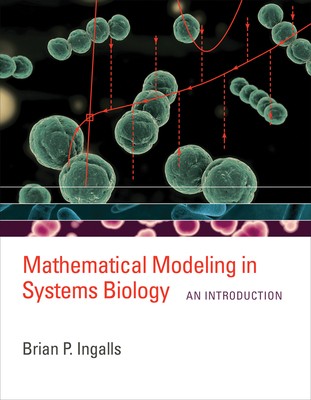
- We will send in 10–14 business days.
- Author: Brian P Ingalls
- Publisher: MIT Press
- ISBN-10: 0262545829
- ISBN-13: 9780262545822
- Format: 17.8 x 22.9 x 2.2 cm, softcover
- Language: English
- SAVE -10% with code: EXTRA
Reviews
Description
An introduction to the mathematical concepts and techniques needed for the construction and analysis of models in molecular systems biology. Systems techniques are integral to current research in molecular cell biology, and system-level investigations are often accompanied by mathematical models. These models serve as working hypotheses: they help us to understand and predict the behavior of complex systems. This book offers an introduction to mathematical concepts and techniques needed for the construction and interpretation of models in molecular systems biology. It is accessible to upper-level undergraduate or graduate students in life science or engineering who have some familiarity with calculus, and will be a useful reference for researchers at all levels.The first four chapters cover the basics of mathematical modeling in molecular systems biology. The last four chapters address specific biological domains, treating modeling of metabolic networks, of signal transduction pathways, of gene regulatory networks, and of electrophysiology and neuronal action potentials. Chapters 3-8 end with optional sections that address more specialized modeling topics. Exercises, solvable with pen-and-paper calculations, appear throughout the text to encourage interaction with the mathematical techniques. More involved end-of-chapter problem sets require computational software. Appendixes provide a review of basic concepts of molecular biology, additional mathematical background material, and tutorials for two computational software packages (XPPAUT and MATLAB) that can be used for model simulation and analysis.
EXTRA 10 % discount with code: EXTRA
The promotion ends in 15d.19:44:59
The discount code is valid when purchasing from 10 €. Discounts do not stack.
- Author: Brian P Ingalls
- Publisher: MIT Press
- ISBN-10: 0262545829
- ISBN-13: 9780262545822
- Format: 17.8 x 22.9 x 2.2 cm, softcover
- Language: English English
The first four chapters cover the basics of mathematical modeling in molecular systems biology. The last four chapters address specific biological domains, treating modeling of metabolic networks, of signal transduction pathways, of gene regulatory networks, and of electrophysiology and neuronal action potentials. Chapters 3-8 end with optional sections that address more specialized modeling topics. Exercises, solvable with pen-and-paper calculations, appear throughout the text to encourage interaction with the mathematical techniques. More involved end-of-chapter problem sets require computational software. Appendixes provide a review of basic concepts of molecular biology, additional mathematical background material, and tutorials for two computational software packages (XPPAUT and MATLAB) that can be used for model simulation and analysis.


Reviews